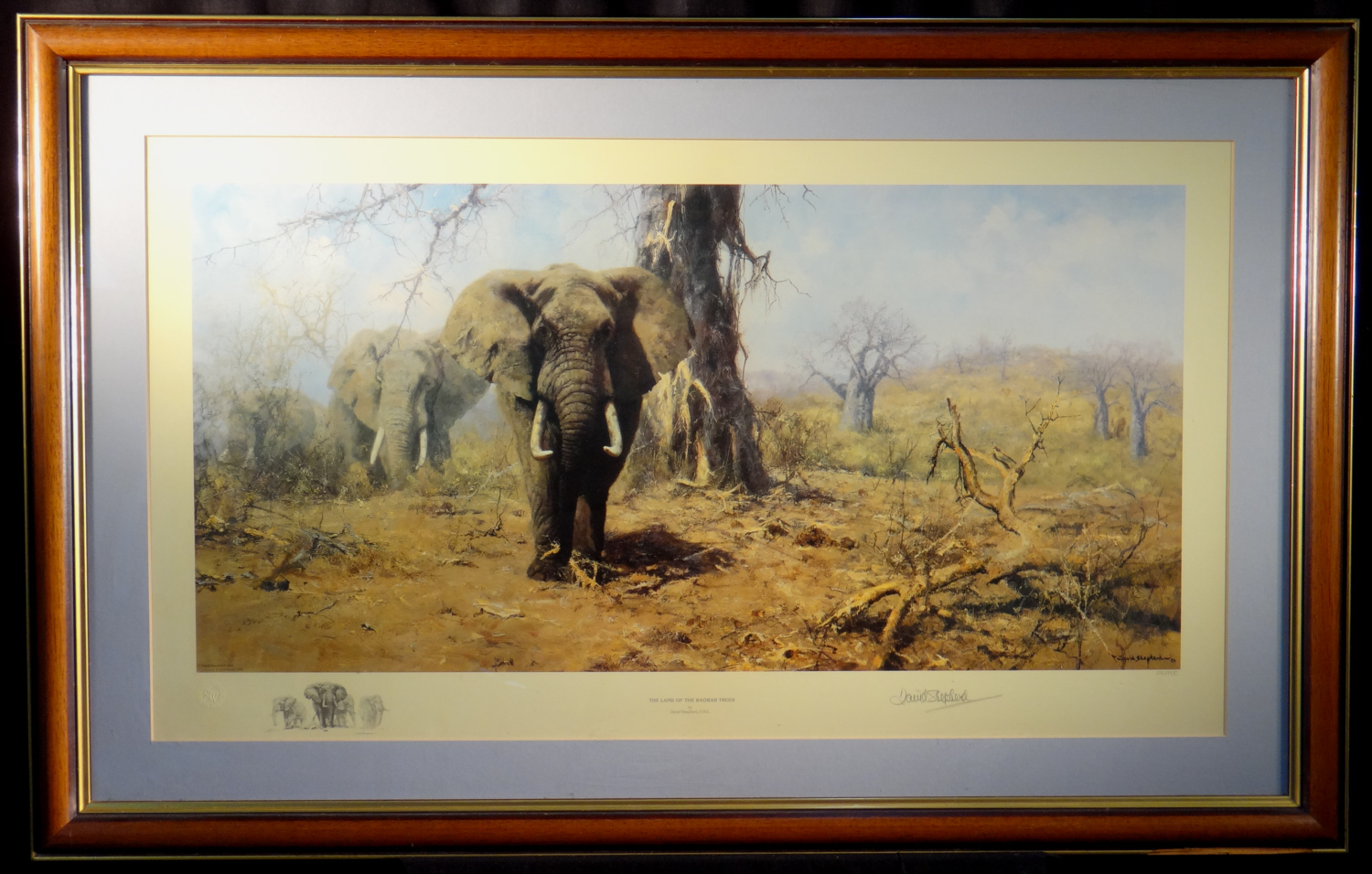The Land of the Baobab Trees
David Shepherd
CBE OBE FRSA FGRA
'Land of the Baobab Trees.'
Signed Limited Edition
Date of publication 1989
Image Size 14" x 28.5"
They are native to Madagascar, mainland Africa[2] and Australia.[3] Trees have also been introduced to other regions such as Asia.
The generic name honours Michel Adanson, the French naturalist and explorer who described Adansonia digitata.
The baobab is also known as the "upside down tree", a name that originates from several myths.
They are among the most long-lived of vascular plants and have large flowers that are reproductive for a maximum of 15 hours.
The flowers open around dusk; opening so quickly that movement can be detected by the naked eye and are faded by the next morning.
The fruits are large, oval to round and berry-like and hold kidney-shaped seeds in a dry, pulpy matrix.
In the early 21st century, baobabs in southern Africa began to die off rapidly from a cause yet to be determined.
Scientists believe it is unlikely that disease or pests were able to kill many trees so rapidly, and some speculated that the die-off was a result of dehydration.
Signed, limited edition, prints and original paintings, drawings for sale.
30 years experience and a collection of hundreds of David Shepherd signed, limited edition prints in the UK!
Studio open, 7 days a week!Viewing by appointment
EMAIL:-administrator@davidshepherd.com
Sir William Russell Flint more.